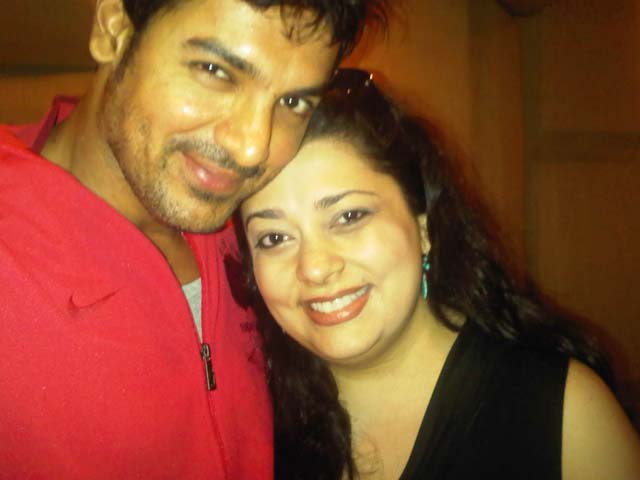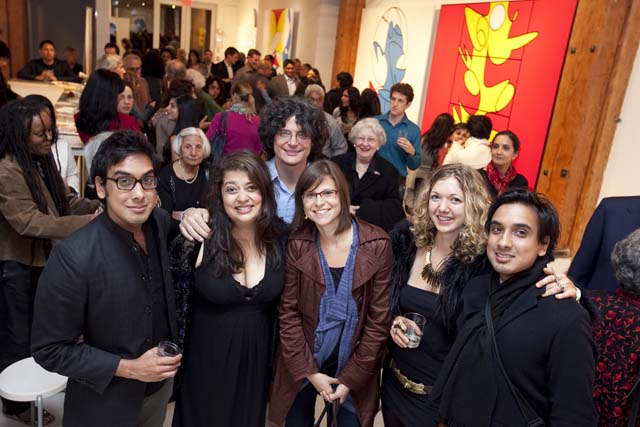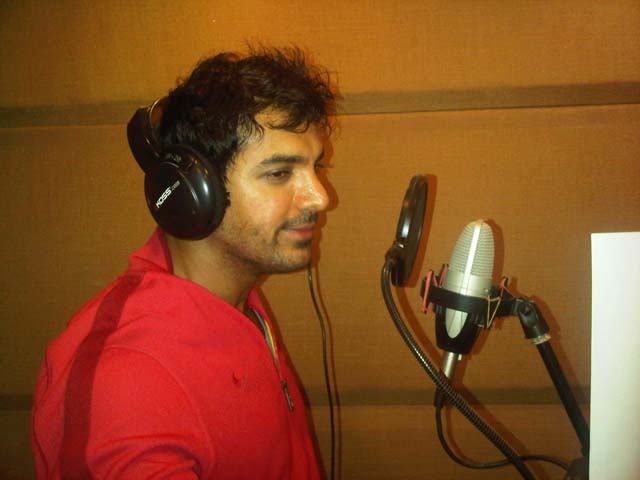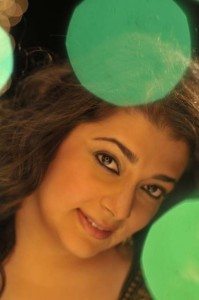
Isheeta Ganguly’s ‘Damaru’ with John Abraham
I first heard Isheeta Ganguly sing the national anthems of both India and America at an event organized by the Indo-American Arts Council in New York some years ago. It was a voice which made you stop whatever you were doing, compelling you to listen – such was its sweet richness.
To New Yorkers, Isheeta Ganguly needs no introduction, and now thanks to the magic of her voice, she is getting known in India as well. From Kolkata, where Rabindrasangeet originated to the very different rhythms of New York, Isheeta has traveled to many cities, many countries, absorbing the rhythms.

Damaru – Shantanu Moithra, Tanmoy Bose & Philip Levy
“Damaru”, her latest offering, is a cross-over album with undertones of Indian folk-pop, classical, lounge, elektronika, and Rabindrasangeet, a wonderful fusion in which many noted artists come together. Released by Times Music, the album features tracks arranged by noted Bollywood composer Shantanu Moithra, Grammy award winning percussionist Tanmoy Bose and the New York based elektronika producer Phil Levy.
Bollywood fans will be intrigued to know that their favorite hunk John Abraham is part of this new album – in a very different way than they usually envisage him. Rather than a Bollywood hero, his is the thoughtful, strong voice behind the words of “Bande Mataram” and the Tagore poem, “Where the Mind is Without Fear”. It reminds you almost of his performance of the idealistic student who stands by the young widow in Deepa Mehta’s ‘Water’.
As Isheeta likes to point out, the name Damaru is a tribute to Lord Shiva’s damaru which created the first primeval sounds as he danced the universe into existence. The songs of Damaru are inspired by Ganguly’s cross-cultural upbringing, the diverse music and musical instruments she has encountered along the way, and the common themes of love and universality which reverberate through this east-west mix.
How is the album doing in India and who is the audience for a crossover album like this?
It’s actually been very well received so far, hitting chartbuster lists in Kolkata and Mumbai in particular, since these are the two cities where I have the most presence musically.
Interestingly, in India there are three broad categories for listeners for the album. One group falls into the category of those who like “fusion” or cross-over music, the second category are those that have followed my traditional Rabindrasangeet career and were very curious to see what I would come up with in this album.
The third category are those who are interested in the accidental “Bolly-edge” of the album which of course includes music composer Shantanu Moithra who has composed “Sanjhari de bata” and “Aona” as well as actor John Abraham who has done a wonderful voice-over on “Bande Mataram”.
Rabindra sangeet, Indian folk pop, jazz, gospel and Bollywood – how do you reconcile all your different musical influences?
This album really speaks to my own story and journey which involved a lot of dichotomies and juxtapositions of two cultures and two trains of thought. Yet interestingly, there were a lot of unexpected synergies and congruencies within that.
I began my singing journey with Rabindrasangeet at the age of seven, which was followed by Western classical when I was twelve, then with gospel and pop styles during my college years. I began innovating with Tagore’s music and various western forms at that point, given that I found certain lyrical links between gospel pieces and certain spiritual songs of Tagore which led to the beginnings of creating a Tagore “folk-pop” and a Tagore “lounge” genre.
The ideas crystallized over time into compositions and I began performing these pieces in New York City at various galleries and festivals. The audiences asked for more and so gradually, I began writing more of my own lyrics in English and working with composers who could really give further definition to some of these early pieces which I had started to create.
What were your earliest influences and how much has your music been affected by your travels?
My earliest musical influence came from my maternal grandfather who was a well-known freedom fighter in India and was a close affiliate of Subhash Chandra Bose’s. He also happened to have a magical singing voice and taught me my first song, “Raghupati Raghava Rajaram” at the age of four. My grandfather and I continued to share many genres of music throughout my childhood including Tagore’s songs, Bengali folk, Bengali modern as well as Hindi film classics. This musical journey with him created my earliest sense of connectedness to India and a home that I never really knew.
When I was five, we moved to Turkey, due to my father’s work with an oil company, then to Japan and then to Indonesia. My trips to India were more frequent due to geographic proximity during this time, and I engaged with my grandfather in these various forms of music including patriotic songs like “Bande Mataram” and “Jana Gana Mana” which were central to his own sense of self-preservation during his years spent in jail during the freedom struggle.

How was the recording done for this album – was it all in same space and did you record it in different countries?
The recording was done in two countries across three cities – New York, Kolkata, and Mumbai for each of the three composers that worked on the album. Phil Levy who arranged “Walk Alone” and “Bande Mataram” recorded with me in New York City while Shantanu Moithra and I recorded in his studios in Mumbai and percussionist Tanmoy Bose and I recorded in Kolkata, the home city of Tagore’s music.
What was the experience like working with John Abraham?
John feels like a friend from long ago. He is a wonderfully generous human being who takes deep ownership of everything he does and for him there was novelty for him in the experience as well in that it was his very first voice-over performance ever. He was very thoughtful about his performance, rehearsed it several times, and asked me many times during the recording if he should re-do or re-record any particular lines. He of course ended up doing a stellar job and it was the first time that Tagore’s “Where the Mind Is without Fear” was brought together with Bankim Chandra Chattopadyay’s “Bande Mataram”.
What’s next? Are you back in India for something special?
I currently live in Mumbai with my husband and two boys. I am performing a fair amount with the album and also do juggle a career in management consulting by day! I have just started working on the beginnings of my next album which will continue to further hone these musical ideas and brings these various threads together. I also look forward to being in New York City in the spring for a performance at the National Arts Club in Gramercy Park on Friday, May 13th, 2011.
Related Article about Isheeta Ganguly: Freedom at Midnight – Sixty Years Later


1 Comment
Isheeta,
We feel proud of you for your achievements in the field of music as well. I always appreciated your sweet voice and politeness.